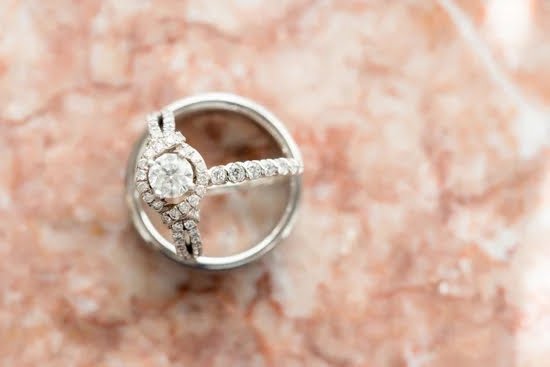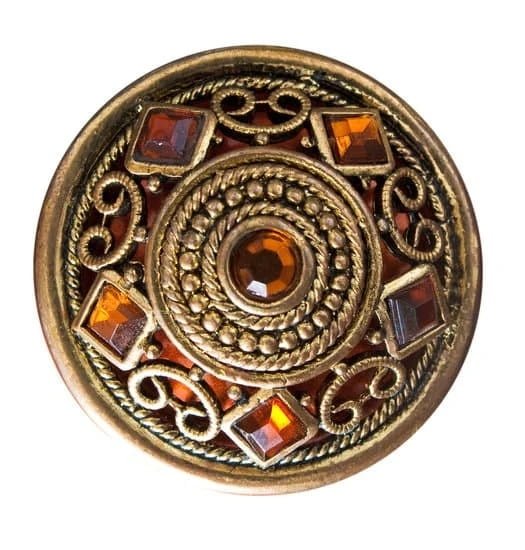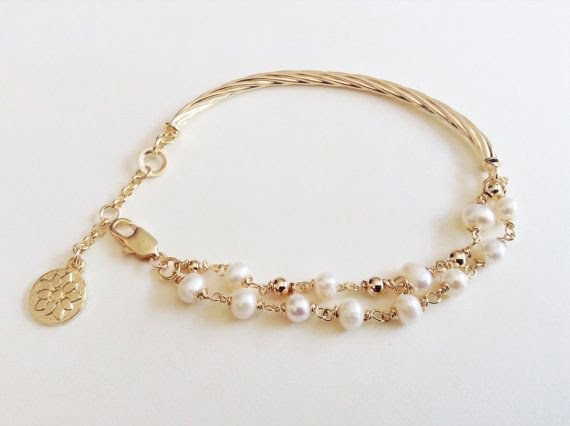Diamond rings hold a special place in our lives, symbolizing love, commitment, and precious memories. However, over time, these exquisite pieces of jewelry can lose their sparkle due to dirt, oil, and everyday wear. This is where the importance of regular cleaning comes into play. There are several methods available for cleaning diamond rings, one of which is using ultrasonic jewelry cleaners. But are these cleaners safe for diamond rings?
Before delving into the safety concerns regarding ultrasonic jewelry cleaners, let’s explore why keeping diamond rings clean is essential. Not only does regular cleaning restore their brilliance and shine, but it also helps maintain their value and longevity. Dirt and grime accumulation not only dulls the diamond’s luster but can also lead to potential damage or even loss of gemstones if ignored for too long.
Nowadays, ultrasonic jewelry cleaners have become incredibly popular among those seeking a quick and efficient way to clean precious jewelry. These devices emit high-frequency sound waves that create tiny bubbles in a cleaning solution. These bubbles then gently remove dirt particles from every corner of your diamond ring without causing any physical damage.
What is an ultrasonic jewelry cleaner
Ultrasonic jewelry cleaners have become popular tools for keeping diamond rings and other delicate jewelry pieces clean. These cleaners utilize ultrasonic waves to effectively remove dirt, grime, and other debris from the surface of the ring.
An ultrasonic jewelry cleaner consists of a tank filled with a cleaning solution, which is typically a mix of water and a mild detergent. The cleaner then uses high-frequency sound waves to create tiny bubbles that implode upon contact with the jewelry, creating a gentle yet powerful scrubbing action. This process is known as cavitation.
The effectiveness of ultrasonic jewelry cleaners in removing dirt and grime is unmatched by other cleaning methods. The microscopic bubbles created during cavitation reach into all the intricate details and crevices of the diamond ring, ensuring thorough cleaning. This makes it especially useful for removing stubborn stains or dirt that may be difficult to reach with other cleaning methods.
One of the key advantages of using an ultrasonic jewelry cleaner is its time-saving nature. With just one cycle lasting around 5-10 minutes, you can achieve results that would otherwise take much longer through manual cleaning methods. Additionally, these cleaners are convenient to use as they require minimal effort on your part – simply place the ring in the designated basket or tray, turn on the machine, and let it do its job.
However, it’s important to note that not all diamond rings are suitable for cleaning in an ultrasonic cleaner. Rings with loose gemstones or delicate settings may be at risk of damage from the intense vibration produced by these machines. Therefore, it’s crucial to understand your diamond ring’s composition and vulnerability before deciding to use an ultrasonic jewelry cleaner.
Benefits of ultrasonic jewelry cleaners
Ultrasonic jewelry cleaners offer several benefits that make them a popular choice for cleaning diamond rings. One of the key advantages is their ability to save time and effort. Cleaning jewelry by hand can be a tedious task, requiring delicate scrubbing and soaking.
With an ultrasonic cleaner, all you need to do is place the ring in a solution and let the machine do the work. The high-frequency sound waves create vibrations that effectively dislodge dirt and grime from even the tiniest crevices in the ring.
Another advantage of ultrasonic jewelry cleaners is their convenience. These machines are typically compact and easy to use, making them suitable for both professional jewelers and individuals who want to clean their jewelry at home. They often come with preset cleaning cycles or customizable options, allowing users to choose the appropriate duration and intensity for their specific needs.
Furthermore, ultrasonic cleaners provide thorough cleaning that may not be achievable with other methods. The microscopic bubbles created by cavitation reach into every nook and cranny of the diamond ring, removing debris that might be difficult to remove with manual cleaning alone. This ensures a deep cleanse that brings back the natural sparkle and shine of the diamond.
While ultrasonic jewelry cleaners offer many benefits, it is important to note that they may not be suitable for all types of diamond rings. That brings us to the next section which discusses understanding diamond ring composition and safety considerations when using ultrasonic cleaners.
Understanding diamond ring composition
Diamond rings are not only precious possessions but also symbols of love and commitment. It is essential to keep them clean and sparkling to maintain their beauty and allure. However, it is important to understand the composition and vulnerability of diamond rings before considering any cleaning method.
Diamond rings typically consist of a metal band adorned with one or more diamonds. The band can be made of various metals such as gold, silver, platinum, or a combination of these. The diamonds are held in place using clasps, prongs, or other delicate settings. Additionally, some diamond rings may also feature other gemstones or intricate designs.
The structure of diamond rings makes them prone to certain risks during cleaning. The use of harsh chemicals or abrasive cleaners can damage the metal band or weaken the settings holding the diamonds in place. This may result in loose stones or even breakage of the ring altogether. Furthermore, certain metals like silver may tarnish or corrode when exposed to strong cleaning agents.
Therefore, it is crucial to exercise caution while choosing a cleaning method for diamond rings. Ultrasonic jewelry cleaners can be effective in removing dirt and grime from diamond rings due to their ability to create high-frequency ultrasonic waves that generate microscopic bubbles capable of dislodging debris. However, there are potential risks involved with ultrasonic cleaning as well.
| Risks | Impact on Diamond Rings |
|---|---|
| Loosening gemstones | The vibrations generated by ultrasonic cleaners can loosen prongs or clasps holding diamonds and other gemstones. |
| Damage to delicate settings | Delicate settings or intricate designs on diamond rings may be damaged by the intense vibrations. |
| Structural damage | In some cases, ultrasonic cleaners can cause structural damage to diamond rings, especially if they have existing weaknesses or flaws. |
Safety considerations
Potential Risks of Ultrasonic Jewelry Cleaners
While ultrasonic jewelry cleaners can be highly effective in removing dirt and grime from diamond rings, there are important safety considerations to keep in mind. The powerful vibrations used in these cleaners can potentially cause damage to the gemstones or settings of the ring if not used with care.
Loosening Gemstones
One of the main concerns when using an ultrasonic cleaner for diamond rings is the possibility of loosening or dislodging gemstones. The rapid vibrations created by the cleaner can shake the stones loose, especially if they are already slightly loose or have prongs that are worn down. This risk is particularly high for rings with pave, channel, or halo settings where multiple smaller stones are held together closely.
Damaging Delicate Settings
Another safety concern is the potential damage to delicate settings that may not be able to withstand the powerful vibrations of an ultrasonic cleaner. Intricate designs like filigree, milgrain edges, and vintage settings may be more susceptible to bending or warping under such conditions. It is also important to note that certain metals, such as silver or plated metals, might react adversely to the cleaning solution used in ultrasonic cleaners.
Structural Damage
The strong vibrations produced by an ultrasonic cleaner can also cause structural damage to diamond rings over time. Continuous exposure to these vibrations can weaken or compromise the integrity of certain components like prongs, shanks, or connectors. Regular use without proper precautions can lead to repair costs and potentially even loss of valuable gemstones.
Given these risks, it is crucial for individuals who choose to clean their diamond rings using an ultrasonic device to exercise caution and diligence throughout the process.
Safe Usage Guidelines
To minimize potential risks associated with using an ultrasonic cleaner on diamond rings, there are several important guidelines to follow:
Select an Appropriate Cleaning Solution
Choosing the right cleaning solution is essential for safe ultrasonic cleaning. It is recommended to use a mild solution specifically formulated for jewelry cleaning. Harsh chemicals or abrasive solutions should be avoided as they can damage the metal or gemstones of the ring.
Set the Correct Timer and Frequency
Each ultrasonic cleaner has different settings, so it is important to read the manufacturer’s instructions and set the appropriate timer and frequency for your specific ring. Using a gentler setting with shorter cleaning cycles can help reduce the risk of damage.
Inspect Gemstone Settings
Before placing a diamond ring in an ultrasonic cleaner, it is crucial to carefully inspect all gemstone settings. If any stones appear loose or have damaged prongs, it is advisable to avoid using an ultrasonic cleaner altogether and instead opt for alternative cleaning methods like gentle brushing or professional cleaning services.
By following these safety guidelines and exercising caution when using an ultrasonic jewelry cleaner, individuals can minimize risks and keep their diamond rings clean without causing harm to their precious possessions. However, it is important to consider alternative safe cleaning methods based on the unique characteristics and settings of their ring if unsure about using an ultrasonic cleaner.
Professional insights
Ultrasonic jewelry cleaners have become a popular choice for cleaning diamond rings due to their efficiency and convenience. However, it is important to consider the safety of using these cleaners on precious gemstones. In this section, we will explore the professional insights and recommendations from experts and jewelers regarding the use of ultrasonic jewelry cleaners for diamond rings.
According to many experts in the field of jewelry, ultrasonic cleaners can be safe for diamond rings as long as they are used correctly and with caution. Professional jewelers often recommend using these cleaners for routine cleaning of diamond rings, especially if they have complex settings that are hard to reach with traditional cleaning methods. The high-frequency vibrations generated by ultrasonic cleaners can effectively remove dirt, oil, and grime from even the tiniest crevices of a diamond ring.
However, it is crucial to follow certain guidelines provided by professionals when using ultrasonic jewelry cleaners. For instance, many experts advise removing delicate or loose gemstones from the ring before subjecting it to ultrasonic cleaning. This is because the vibrations produced by these cleaners can potentially loosen or dislodge gemstones that are not securely held in place by prongs or settings.
Additionally, professionals suggest avoiding ultrasonic cleaning for diamond rings with fractures or structural weaknesses. The intense vibrations created during the cleaning process can exacerbate existing damage or cause new cracks in the stone. It is always recommended to consult a jeweler or an expert before using an ultrasonic cleaner on a damaged diamond ring.
Alternative cleaning methods for diamond rings
While ultrasonic jewelry cleaners offer convenience and thorough cleaning, some individuals may have concerns about their safety when it comes to diamond rings. In this section, we will explore alternative cleaning methods that are safe for diamond rings.
One of the simplest and safest ways to clean a diamond ring is by using warm soapy water. Fill a bowl with lukewarm water and add a few drops of mild dish soap. Gently immerse the ring in the soapy water and allow it to soak for 20-30 minutes.
Then, use a soft-bristled toothbrush or a dedicated jewelry brush to gently scrub away any dirt or grime. Rinse the ring under running water and pat it dry with a soft cloth. This method is effective for removing everyday dirt and oils from your diamond ring without causing any damage.
Another alternative cleaning method is gentle brushing. Using a soft-bristled toothbrush or a dedicated jewelry brush, you can manually remove dirt and grime from your diamond ring’s surface. Wet the brush with warm soapy water or jewelry cleaning solution, then gently scrub the ring in circular motions. Be sure to pay attention to hard-to-reach areas like under prongs or around gemstones. After brushing, rinse the ring under running water and dry it with a soft cloth.
For those who prefer professional cleaning services, visiting a trusted jeweler is always an option. Professional jewelers have access to specialized equipment and solutions that can effectively clean and restore diamond rings without causing any harm. They have experience working with delicate settings and gemstones, ensuring that your ring receives proper care during the cleaning process.
Tips for safe ultrasonic cleaning
Ultrasonic jewelry cleaners can be a convenient and effective way to clean diamond rings, but it’s important to take certain precautions to ensure the safety of your precious jewelry. Here are some tips and guidelines to follow when using ultrasonic cleaners for diamond rings:
- Choose the appropriate cleaning solution: It is crucial to use a cleaning solution that is safe for both the diamond and any other gemstones or metals in the ring. Avoid solutions that contain harsh chemicals or abrasives as they may damage the stones or cause discoloration. Opt for a gentle jewelry cleaner specifically formulated for use with ultrasonic machines.
- Set the right timer: Ultrasonic cleaners should only be used for short periods of time, typically between 3 to 5 minutes. Setting the timer too long can result in excessive vibration and heat, which may cause damage to the ring’s delicate settings or loosen gemstones. If you’re unsure about the suitable cleaning duration for your specific ring, consult with a professional jeweler before proceeding.
- Avoid potential pitfalls: Certain types of diamond rings should not be cleaned in an ultrasonic cleaner altogether. Rings with fragile settings, such as pave or antique designs, and those containing treated diamonds or fracture-filled stones should be cleaned using alternative methods, as these may become damaged or compromised by the intense vibrations of an ultrasonic cleaner.
Remember, while ultrasonic cleaners can provide thorough and efficient cleaning results, they are not suitable for all types of diamond rings. As each ring is unique in terms of composition and setting, it’s essential to consider its specific characteristics before deciding on a cleaning method.
In situations where ultrasonic cleaning is not recommended or preferred, alternative methods such as using warm soapy water and a soft brush can be effective at removing dirt and grime from your diamond ring without risking any damage. Additionally, professional cleaning services offered by reputable jewelers are another option worth considering, as they have the expertise and equipment to safely clean your diamond ring.
By following these tips and taking the necessary precautions, you can ensure the safe use of ultrasonic jewelry cleaners for diamond rings and maintain their sparkle and beauty for years to come.
Conclusion
In conclusion, ultrasonic jewelry cleaners offer several enticing benefits for diamond ring cleaning. They save time, provide convenience, and effectively remove dirt and grime. However, it is crucial to exercise caution when using these cleaners on diamond rings due to the potential risks involved. The vulnerability of diamond rings, including loose gemstones or delicate settings, can lead to damage if not handled properly.
Expert opinions and professional jewelers recommend considering alternative safe cleaning methods for diamond rings. Warm soapy water and gentle brushing are effective options that minimize the risks associated with ultrasonic cleaners. Additionally, relying on professional cleaning services ensures that your precious diamond ring receives expert care without any potential harm.
When choosing to use an ultrasonic jewelry cleaner, it is essential to follow safety guidelines and precautions. Selecting an appropriate cleaning solution, setting the right timer, and being aware of potential pitfalls will help protect your diamond ring from any unwanted damage or loosening of gemstones.
Ultimately, while ultrasonic jewelry cleaners can be beneficial for certain types of jewelry cleaning, caution should be exercised when using them on diamond rings. Each ring has its own unique characteristics and settings which may require alternative cleaning methods. By prioritizing caution and considering other cleaning approaches based on your specific ring’s needs, you can maintain the dazzling beauty of your precious diamond rings for years to come.
Frequently Asked Questions
Can I use ultrasonic cleaner for diamond rings?
Yes, ultrasonic cleaners can be used for cleaning diamond rings. Ultrasonic cleaners use high-frequency sound waves to create microscopic bubbles in a cleaning solution. These bubbles implode and produce intense energy that helps remove dirt, grime, and other particles from the surface of the diamond as well as hard-to-reach areas.
Diamond is a very durable gemstone and can withstand the vibrations produced by ultrasonic cleaning without any damage. However, it is essential to note that only diamonds should be cleaned in an ultrasonic cleaner, not other gemstones or delicate jewelry pieces.
Can I put my wedding ring in an ultrasonic cleaner?
Wedding rings can generally be safely cleaned using an ultrasonic cleaner. Most wedding rings are made of metals like gold, platinum, or silver, which are resistant to the vibrations created during the ultrasonic cleaning process.
However, it is crucial to pay attention to any gemstones or settings on the ring that could be vulnerable to damage from the vibrations or intense energy generated by the cleaner. For example, if your wedding ring has delicate prong settings or contains gemstones with fractures or vulnerabilities, it is best to avoid using an ultrasonic cleaner and opt for alternative methods such as gentle hand-cleaning or professional cleaning.
What is one of the disadvantages of ultrasonic cleaners diamond?
One of the disadvantages of using ultrasonic cleaners for diamonds is that it may cause potential damage if not used correctly or if certain precautions are not taken. While diamonds are hard and durable stones, they can still be prone to chips or fractures if they have pre-existing structural weaknesses or inclusions. The intense energy produced by an ultrasonic cleaner can potentially exacerbate these issues if they exist in a diamond.
Additionally, certain treatments done on diamonds such as fracture filling may also be affected by the vibrations from the cleaner. Therefore, it’s important to consult with a jeweler before using an ultrasonic cleaner on a diamond to ensure there are no known vulnerabilities or treatments that could be compromised during the cleaning process.

Welcome to my jewelry blog! My name is Sarah and I am the owner of this blog.
I love making jewelry and sharing my creations with others.
So whether you’re someone who loves wearing jewelry yourself or simply enjoys learning about it, be sure to check out my blog for insightful posts on everything related to this exciting topic!





